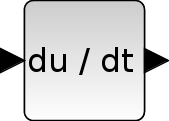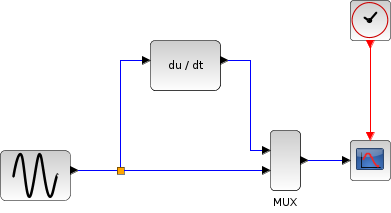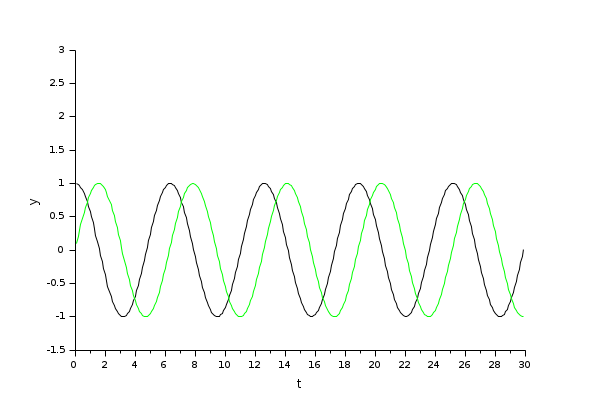Please note that the recommended version of Scilab is 2026.0.0. This page might be outdated.
See the recommended documentation of this function
DERIV
Derivative
Block Screenshot

Description
The Derivative block approximates the instantaneous derivative of its input with respect to time t.

The derivative block has no setting and the initial output for the block is zero.
Default properties
always active: no
direct-feedthrough: yes
zero-crossing: no
mode: no
regular inputs:
- port 1 : size [-1,1] / type 1
regular outputs:
- port 1 : size [-1,1] / type 1
number/sizes of activation inputs: 0
number/sizes of activation outputs: 0
continuous-time state: no
discrete-time state: no
object discrete-time state: no
name of computational function: deriv
Interfacing function
SCI/modules/scicos_blocks/macros/Linear/DERIV.sci
Computational function
SCI/modules/scicos_blocks/src/c/deriv.c (Type 4)
Example
In this example, we compute and display the derivative waveform of a sinusoidal input signal, with amplitude 2 and frequency 1.25 Hz.
The input and output waveforms of the DERIVATIVE block are shown below:


| Report an issue | ||
| << CLSS | Continuous_pal | INTEGRAL_f >> |